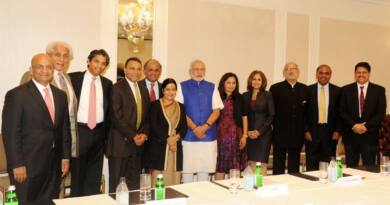Awesome Growth Of The Indian Women: She Is Unstoppable
In its own right, Shri Mahila Griha Udyog Lijjat Papad stands from the crowd. In 1959, seven women in a chawl in Girgaum, where regular lower middle-class people resided, got together and decided to start selling papads. Making the papads by hand themselves, they dried them on their terraces and then sold them. The market lapped it up, and demand increased from both consumers and other women who wanted to earn a livelihood.
These women picked up marketing, sales, and distribution on the job, even though they had no background in the field to begin with. With the advent of television in India, the puppet-adorned Lijjat Papad commercial and its catchphrase, “Karram Kurram Kurram Karram,” went viral. Shri Mahila Griha Udyog Lijjat Papad is a cooperative that has grown from seven branches to over 45,000 members among women in India. Rumour has it that its yearly revenue is more than 1,600 crore. Where many traditional industrial houses folded after liberalisation, not only did Lijjat hold its own despite competition from every corner of the country, but it also thrived.
Lijjat affirms the ability of women to excel in business, but it is also a symbol of just how long it took in Indian history for women to be able to do something like this. It is hard to come up with names of women in the world of entrepreneurship in the initial decades after independence. It is a different story now. As International Women’s Day is being celebrated, almost every section of Indian society and economy is witnessing an increasing presence and impact of women. In wealth creation, too, it is seminal. In 2022, Hurun India published their Hurun Women Rich List and noted: “The wealth of the women featured in the list has almost tripled during the last year. The cut-off for the new list is INR 300 crore, as against INR 100 crore in the last list. The cumulative wealth of the top 100 in the list surged by 53% to INR 4,16,970 crore from INR 2,72,540 crore in 2020. Newcomers make up nearly a quarter of the list. The cumulative wealth of the women wealth creators contributes to 2% of India’s nominal GDP.”
Progress has been similar for the female workforce in corporations. Some did work in the past, although it was typically in specialised fields like teaching, secretarial work, or stenography. In the business world, men dominated the middle and upper echelons. In the last several decades, that has been rapidly evolving. The percentage of women in executive roles is examined in an annual report by the consulting firm Grant Thornton. This year’s report has just been released, and it shows that 34 percent of senior management (SM) positions in the country are held by women. But to appreciate the leap, one has to look back 20 years. In 2004, the corresponding number was just 12 percent. In 2014, it had reached only 14 percent. The last 10 years have seen an extraordinary jump. According to the survey, a small percentage of Indian enterprises had no women in senior management roles in 2024, while a larger percentage had one or more women in such a role. From 2004 to 2014, the percentage of companies without any women in SM roles increased from 35% to 42%, so this is a substantial improvement.
All this is not unexpected. Even if Indian society drags its feet, the Indian state, for all its flaws, has been for a long time committed to the idea of women’s education. The initiative started at the primary level, after which a minority of women began pursuing higher education. The fundamental barrier of women not being present at the beginning of the race will be overcome once there is educational parity between men and women. Economic liberalisation led to the emergence of a new wave of businesses and the rapid scaling up of industries, creating a demand for a qualified workforce that welcomed women.
There was a time not too long ago when, in a class at an engineering college, you could count the number of females with your fingers. Right up until the turn of the century, that was correct. Only around ten years ago, fewer than ten percent of IIT’s BTech students were female. But later on, the government took measures to actively increase the population. It was able to raise it to 20% by 2020. “In order to improve the enrollment of female students in the Indian Institutes of Technology (IITs), the government has decided to raise the enrollment of female students in the B.Tech. programmes of IITs from 8% to 14% in 2018–19, 17% in 2019–20, and 20% in 2020–21 through the creation of supernumerary seats,” Minister of State for Education Subhas Sarkar said last year in response to a question in Parliament. Accordingly, female enrollment in IITs for B.Tech. programmes was achieved at 15.3% in 2018–19, 18% in 2019–20, and 19.8% in 2020–21.”
In the Indian education system, there is a culture of engineering students viewing business management as the next step on their career trajectory. More women enrolled in business management programmes after deciding they didn’t want to be engineers. They account for one-third of students on a rough average across all Indian Institutes of Management (IIMs). Once women from elite engineering and management institutions began to populate the best businesses in India, it was just a matter of time for leadership roles to follow within them.
It was the same story at work when it came to the administrative services that govern India. While the first female Indian Administrative Service (IAS) officer came soon after independence in 1951, it was an entirely different story when it came to Indian Police Service (IPS) officers. Kiran Bedi would have to wait twenty-one more years to shatter that ceiling. The percentage of women serving as police officers is still relatively low, at around 10%. Some figures were available in an article published by the Centre for Economic Data and Analysis at Ashoka University: For some time now, India has been working towards the goal of having one female officer for every three male officers. In response to suggestions made by the Second Administrative Reforms Commission (established in 2005), the federal government periodically issues advisory urging the states to raise the percentage of female police officers to 33% of the entire force. But even with this top-down encouragement, we are still a long way from our goal. According to the latest statistics available, there were 2,17,026 female officers in India’s police force on January 1, 2021. They constituted a mere 10.5% of the nation’s total police force. However, progress has been made recently. In 2010, for instance, the figure was under 5 percent, or half of the present.
Take the armed force, in which women have had a minimal presence traditionally. The pendulum is swinging there too. Even if combat roles still remain out of reach, in other spheres, their numbers are increasing. The National Defence Academy (NDA), which trains and inducts officers, began admitting women in January 2023. The government’s Press Information Bureau (PIB) said in one of its releases then: “Armed Forces have opened entry for women candidates in the NDA, with 19 cadets, including 10 from the Indian Army, joining the academy every six months. The first batch of women cadets has started training in the NDA with effect from July 2022, and the second batch has commenced training with effect from January 2023.”
The march of women in India has reached a critical mass because it is now self-fueling. Because women have an education and earn money, they are as important to the consumer base as men. Their wants must be met by the market. This results in the allocation of additional resources to them. And it cuts across classes.
When newly independent India sent a delegation to the Olympics in 1952, it consisted of sixty male athletes and four female athletes. Of the four, two were track and field athletes, and the remaining were swimmers. It took 48 years for an Indian woman to win a medal until Karnam Malleswari won the gold in weightlifting. Since then, Indian women have also won medals in badminton, boxing, and wrestling. These numbers are considerably higher in other international competitions, like the Commonwealth Games, but what is noteworthy is their participation. In 1952, Indian women accounted for only 6 percent; in the 2020 Olympics, they were 44 percent.
“Rise of Indian Women: Towards Excellence in Sports” was the title of a report published two years ago by PricewaterhouseCoopers. It mentioned that women’s sports are undergoing a subtle revolution and that India had its best Olympic performance ever in 2020, with record-breaking participation in every event. We also made history by taking home medals in six different Olympic sports at once: track and field, badminton, wrestling, boxing and hockey. Out of the seven medals won by India, women bagged three medals—a performance that can now be the springboard towards even greater success for women athletes on the global stage.”
In the arts and culture, women already had a strong foothold, unlike in many other industries.
Take Bollywood. Dadasaheb Phalke used male actors to portray female characters in the first Hindi film. In his second movie, he had a female actor. Women quickly found a footing, and Devika Rani, in fact, was one of the moguls of Indian culture even in pre-independence times. It was still an overwhelming male industry catering to male sensitivities, and it remains so to some degree, especially in terms of female leadership. The yearly report “OWomaniya!” is published by Ormax Media, on gender diversity in Indian entertainment, and its report last year looked at 135 director/CXO positions in the top 25 media and entertainment companies in 2022 and found that women accounted for only 13 percent.
A study by Nike Asia last year, however, also found that the share of women-led movies was increasing. Using data from 1,200 Bollywood films released between 2000 and 2010, the Nikkei Asia found that the percentage of films starring female protagonists has been steadily increasing, from 10% to 25% presently. Streaming services have hastened the rise of this genre, which now accounts for one out of four films. This figure was one in ten in the early 2000s. The box office for these films was comparable to that of films starring men. Nikkei Asia wrote: “Around 77% of female-led films were profitable, compared to 72% of the rest. Women-led movies generated a higher return on investment, on average, for every dollar or rupee spent. They returned 1.89 times the money invested, compared to an ROI of 1.75 for the rest.”
The march of women India has reached a critical mass because it is now self-fueling. Due to their education, employment, and income, women are just as significant as men in the consumer base, necessitating that the market cater to them. They will subsequently receive more resources as a result of this. And it cuts across classes. Take politics. There are reservations for women at almost every level of elections, which makes them an increasingly powerful force in shaping the nation.
But there is also the flip side—the decisive importance of the female voter. Earlier, women voted in the direction of men, but now they often decide who comes to power. Women receive rewards for policies that benefit them. During his lengthy tenure as chief minister of Odisha, Naveen Patnaik, for example, promoted women’s economic independence through self-help groups. Patnaik found in them a strong political base.
Last December, the State Bank of India (SBI) came out with a research report that predicted women’s voter turnout would overtake men’s in the not-too-distant future. The number of people casting ballots rose to 62 crores, with 30 crores of those being female. In 2024, total voter turnout could touch 68 crores. It could be 49% total voter turnout in 2029; the current rate of polling could touch 73 crores, of which women voters at 37 crores could be outstripping registered male voters at 36 crores of registered voters, or >50%.
And if the march of women continues in India, the historical lead of men in many other fields will also evaporate soon.




